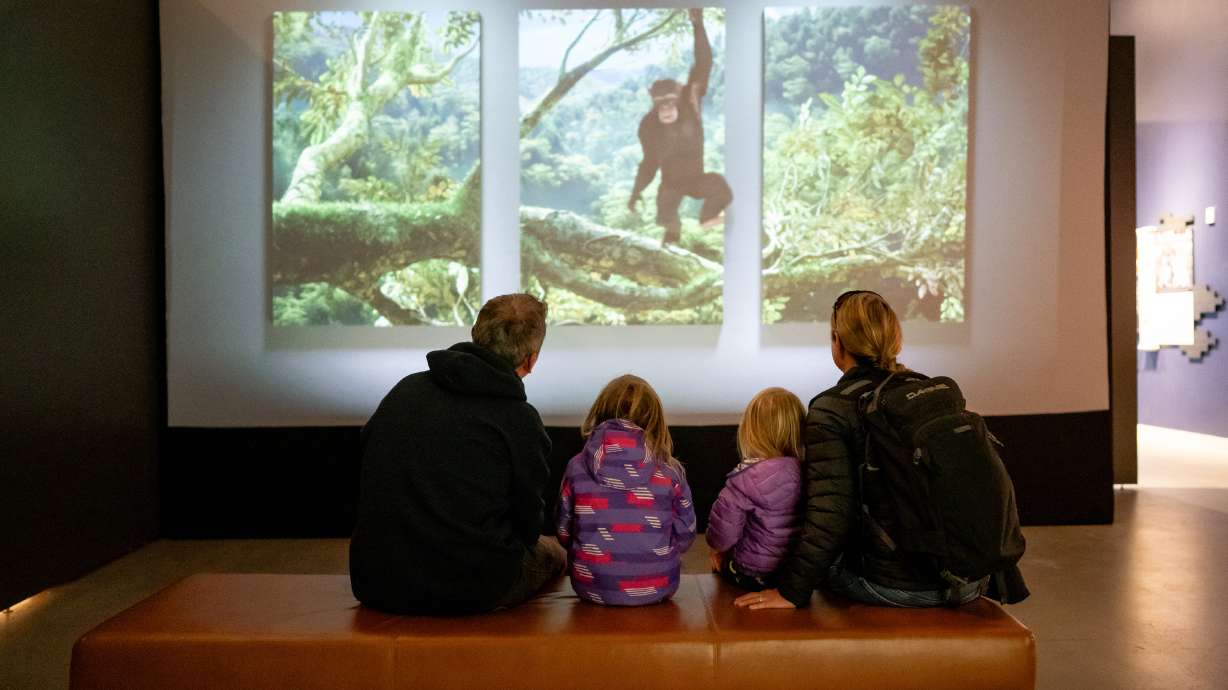Estimated read time: 3-4 minutes
This archived news story is available only for your personal, non-commercial use. Information in the story may be outdated or superseded by additional information. Reading or replaying the story in its archived form does not constitute a republication of the story.
SALT LAKE CITY — The jungle sounds of cooing chimpanzees and a breeze swaying through trees greets patrons as they walk into the Natural History Museum of Utah's new exhibit, "Becoming Jane: The Evolution of Dr. Jane Goodall."
The sights and sounds of Goodall's life decorate the exhibit, from her favorite childhood stuffed toy chimpanzee up to a replica of the tree-canopied tent she lived in during her years spent among a chimpanzee community. Hands-on videos and displays friendly to all ages carry patrons through a timeline of her life and work.
Her whole life, Goodall knew she wanted to spend her time with humankind's closest living relative, the chimpanzee. She worked as a waitress at a hotel to save her money, eventually earning enough to take a boat to Kenya — a trip that would forever change our understanding of our close cousins.
The Natural History Museum of Utah has been planning this exhibit for years, excited to help Utah understand Goodall's impact on the way scientists interact with chimp communities in what is now Gombe National Park in Tanzania.
Goodall became famous for the knowledge she brought to the scientific community about chimpanzees — her observations helped us understand just how much like humans chimpanzees are, especially in their use of tools, which was originally thought only to be a human trait. She is most recently well known for her activism in advocating for protection of forests and ape habitats.
Rachna Reddy, a keynote speaker at the opening celebration of the exhibit on Saturday said Goodall is "one of the most iconic figures of drawing women into science ... in a context where there's a lot to be afraid of."

Reddy's work is greatly inspired by Goodall, starting when she was invited to observe chimpanzees in Uganda at just 19 years old. Now 33 and an assistant professor of biological anthropology at the University of Utah, she considers Ngogo Kibale National Park a home away from home where she spends a few months every year with a chimp community.
"I hope (the exhibit) is an inspiration to be curious about the world around (us), and to value not just other people, but other animals as individuals and ... ways we can coexist," Reddy said.
While one family member can be watching a a hologram-like Goodall share her memories of arriving in Tanzania, another family member can be learning how to speak like a chimpanzee by listening and howling with a chimp through a screen.
Original letters, notes and journals penned by Goodall are also on display throughout.
There are various attractions related to the "Becoming Jane" exhibit throughout the museum, teaching about the relation and evolution from early man and monkey to today.
The "Becoming Jane" exhibit is free with admission to the Natural History Museum of Utah and will be on display through May 27, 2024. For more information about the exhibit, visit the museum's website.
To learn more about Reddy's research at Ngogo Kibale National Park, visit the Ngogo Chimpanzee Project's website.










